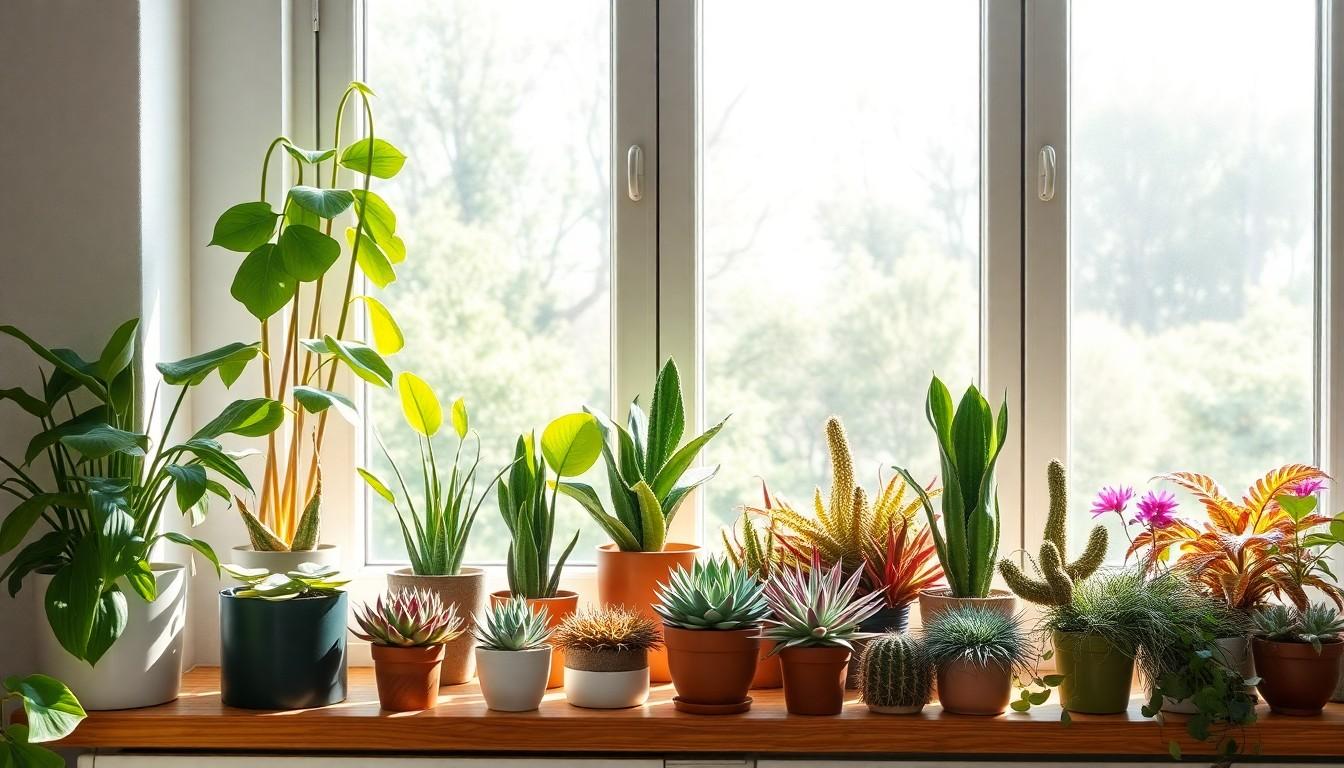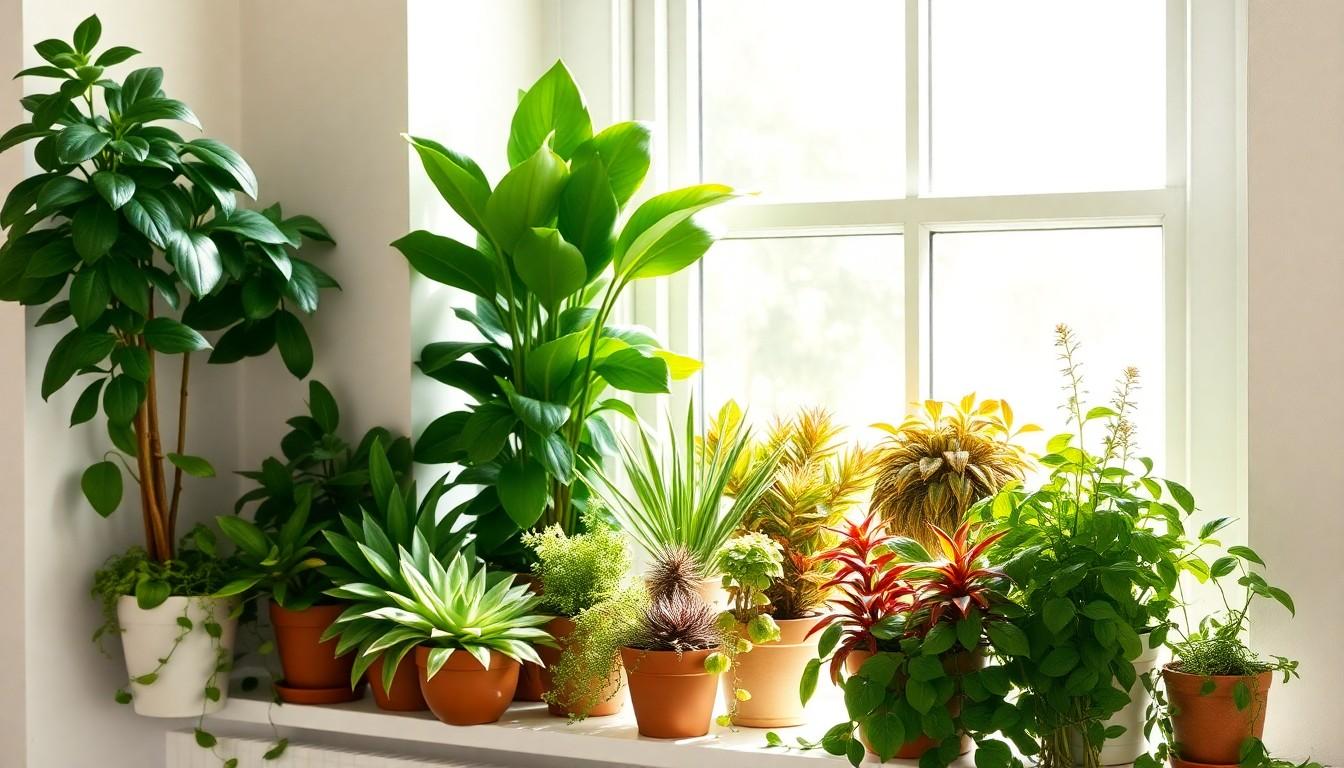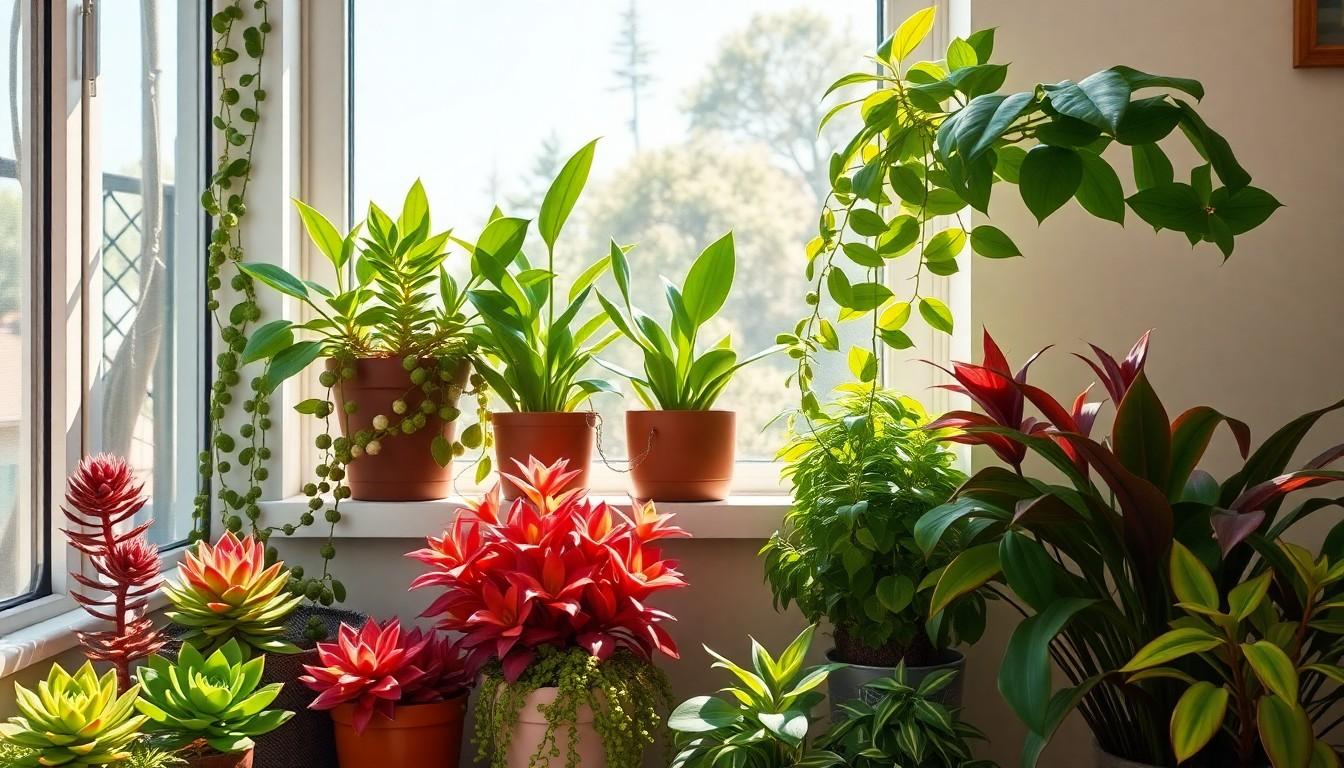If you’ve got a south-facing window, congratulations! You’ve just won the plant lottery. With an abundance of sunlight pouring in, your home can become a lush oasis. But wait—before you start turning your living space into a jungle, let’s talk about which houseplants are ready to bask in that glorious sun without turning into crispy critters.
Overview of House Plants for South Facing Window
Selecting houseplants for a south-facing window demands attention to light requirements. Bright sunlight streams through these windows, making them ideal for sun-loving plants. Many thriving options exist that appreciate such conditions, ensuring a healthy and vibrant indoor garden.
Succulents represent one popular choice for south-facing spaces. These plants store water in their leaves, allowing them to tolerate direct sunlight without damage. Varieties such as Echeveria and Jade plant flourish under full sun while adding aesthetic appeal.
Cacti also fit perfectly in sunny locales. Various species, including the Saguaro and Barrel cactus, can withstand intense light, contributing unique textures and shapes to home decor. Their minimal watering needs make them suitable for those with busy lifestyles.
String of Pearls offers another captivating option. This trailing succulent thrives in bright light and adds an eye-catching element to any room. Its unique bead-like leaves create a striking visual effect in hanging planters.
Adding colorful foliage, Croton and Dracaena selections thrive in direct sunlight as well. Both plants feature vibrant leaves, creating drama and interest in the space. The Croton’s striking patterns and Dracaena’s diverse varieties contribute to a lively environment.
Herbs also thrive in this type of light. Basil, rosemary, and thyme enjoy exposure to bright sunlight, allowing home gardeners to enjoy fresh herbs year-round. These plants not only provide culinary benefits but also enhance the home’s atmosphere.
Numerous houseplants favor the bright conditions of a south-facing window. Optimal choices range from succulents and cacti to colorful foliage and edible herbs. Each plant brings unique qualities, enriching indoor spaces and ensuring a flourishing indoor garden.
Ideal Conditions for South Facing Windows

South-facing windows create an excellent environment for houseplants that thrive in bright, direct light. Selecting the right plants ensures growth and vibrancy.
Light Requirements
Most houseplants suitable for south-facing windows require full sun exposure for optimal growth. Succulents, including Echeveria and Jade plants, benefit from six to eight hours of direct sunlight each day. Cacti, like Saguaro and Barrel cactus, thrive in similar conditions, making them perfect choices for this location. Colorful foliage plants such as Croton and Dracaena enjoy bright light, enhancing indoor aesthetics. Herbs, including basil, rosemary, and thyme, flourish with plenty of sunshine, providing culinary delights in addition to greenery.
Temperature Preferences
Plants in south-facing windows also appreciate warmth. Ideal temperatures range from 65°F to 75°F during the day and slightly cooler at night. Such conditions encourage healthy growth and thriving foliage. Lower temperatures, below 60°F, can stress many houseplants, leading to stunted growth or damage. Maintaining warm indoor temperatures promotes a favorable environment, allowing plants to prosper. Proper placement and monitoring of temperature contribute to their overall health and vitality.
Best House Plants for South Facing Window
South-facing windows create ideal conditions for a variety of houseplants, thanks to bright, direct sunlight. Selecting plants that thrive in this environment maximizes indoor greenery.

Succulents
Succulents excel in sunny spaces with their water-storing capabilities. Echeveria and jade plants stand out for their hardiness against direct light. They require minimal watering, making them low-maintenance choices. The string of pearls adds unique visual appeal, trailing gracefully with its bead-like leaves. These plants flourish with full sun exposure, achieving optimal growth in south-facing window conditions.
Tropical Plants
Tropical plants thrive in bright light, bringing exotic vibes indoors. Consider Croton for its colorful, variegated leaves that brighten any space. Dracaena varieties also prosper in sunny spots, featuring lush foliage that enhances decor. Umbrella plants, with their interesting leaf shape, tolerate bright conditions while adding height. These plants generally prefer humidity, so misting them occasionally enhances their growth and vitality.
Flowering Plants
Flowering plants add vibrant colors to indoor environments. Bougainvillea flourishes in bright sunlight, showcasing stunning blooms. Hibiscus, known for its large flowers, thrives in sunny locations, attracting attention effortlessly. Geraniums and Petunias are also excellent choices, blooming abundantly when placed in direct light. Their cheerful flowers create an inviting atmosphere, invigorating any home setting.
Care Tips for House Plants in Sunny Spots
House plants thrive in sunny spots when proper care measures are implemented. Understanding specific needs ensures optimal growth and vitality.
Watering Practices
Watering frequency depends on plant type and environmental conditions. Succulents typically need watering every 2 to 3 weeks, while tropical plants often require more regular watering, about once a week. It’s vital to check the soil’s moisture before watering to prevent over-saturation. Signs of underwatering include droopy leaves and dry soil, while yellowing leaves may indicate overwatering. Establishing a consistent watering schedule contributes to plant health and ensures lush growth.
Soil Recommendations
Choosing the right soil mixture greatly impacts plant success. Cacti and succulents thrive in well-draining soil that contains sand or perlite for air circulation. Tropical plants, on the other hand, prefer a rich, organic potting mix that retains some moisture while allowing drainage. The pH level of the soil should ideally range from 6 to 7 for most houseplants. Regularly checking soil quality and replenishing nutrients can significantly enhance plants’ growth and overall resilience.

